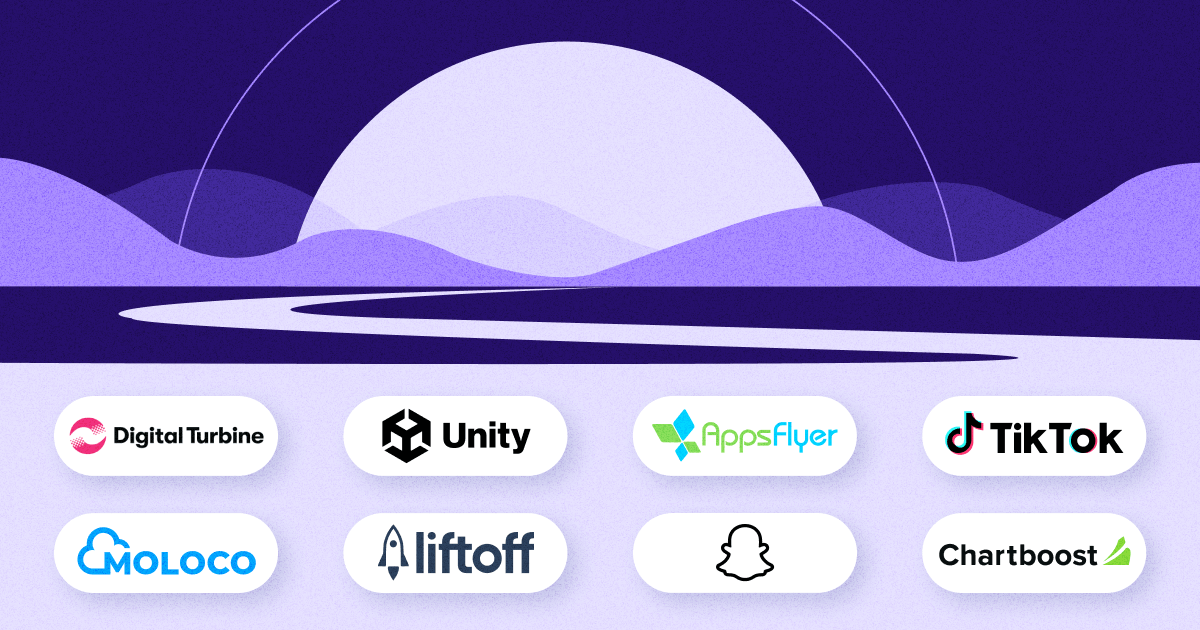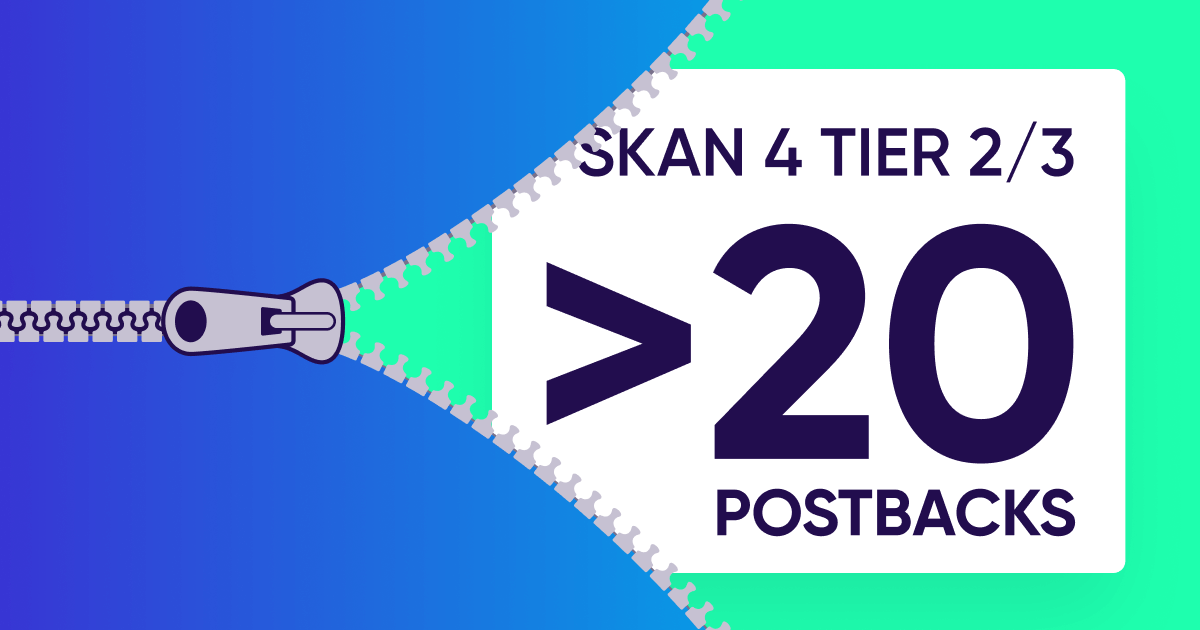
Cost per install (CPI)
Cost per install (CPI) is used as a pricing model for mobile app user acquisition campaigns.
What is cost per install (CPI)?
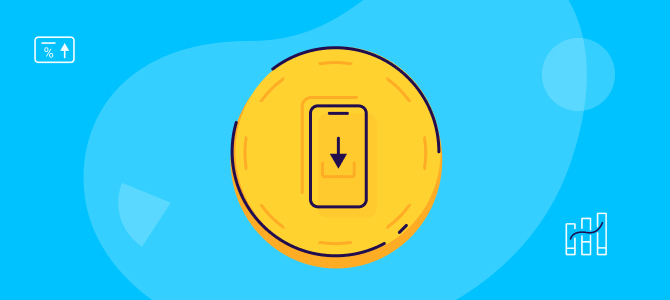
The CPI is a predetermined price that the advertiser agrees to pay the publisher every time a user installs their app as a direct result of an ad served by the publisher.
This term is sometimes confused with eCPI or effective CPI, which is the de-facto price you are paying for installs as they come in (or after the campaign).
For example, an advertiser gives the publisher a marketing budget of $10,000 which ends up driving 5,000 installs. That would mean the eCPI for this campaign was $2.
Sometimes media sources will optimize based on an eCPI goal, which means that before the campaign starts, the publisher and advertiser agree to use a target eCPI and optimize towards that goal.
To further complicate things, self-reporting networks (SRNs) like Facebook, Google, and Snap will charge advertisers based on CPM (cost per mille or 1,000 impressions viewed) while optimizing towards eCPI or according to the advertiser’s max bid levels. As such, their eCPI will often differ from that calculated by the attribution provider because an SRN charges upon engagement regardless of whether it was attributed for the last touch or not.
How to calculate CPI?
The calculation for CPI (interchangable with eCPI) is as follows:
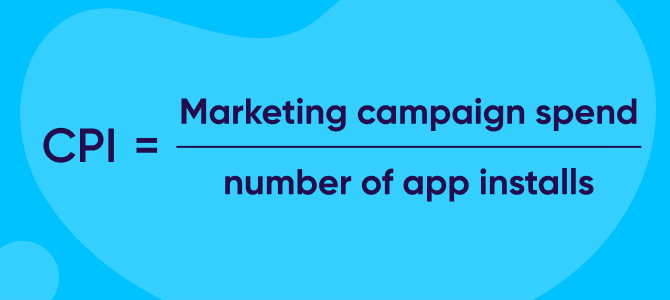
Why does it matter?
CPI is one of the most used metrics by marketers. And with good reason. You could have the best app on the market, but if users aren’t installing and using your app then it may as well be the proverbial tree falling in the forest.
Let’s discuss some of the pros to using CPI in more depth.
- Good indicator of the effectiveness of your campaign
CPI is a measurement of your customer acquisition costs (CAC) and therefore helps to determine how effective your campaign was at generating installs. A high install rate means that your campaign reached the right target audience, at the right time, with the right creative.
- Low risk for advertisers relative to other pricing models
When a user installs an app there is a multi-step process. That means a user must actually want the app and therefore demonstrates a high user intent. As an advertiser, knowing that you are only paying for users who actually want your app – and are therefore more likely to engage with it – reduces the risk of wasting marketing dollars. When you compare CPI to other models such as CPM where you pay simply to show your ad and there is no guarantee the user will take any further action you can see why some advertisers favor CPI.
- Good for creating a buzz around your app
When launching a new app you want it to feature in the app store rankings quickly, otherwise it is at risk of getting lost in the sea of apps that already exist. A CPI campaign can help create a buzz around your app leading to a surge in popularity and greater visibility in the app store.
However, it is not all plain sailing and positivity with CPI. There are some drawbacks.
- Installs aren’t a guarantee for in-app engagement
We mentioned earlier that an install indicates high levels of intent. However, it doesn’t guarantee that a user will perform bottom of the funnel actions, such as purchases. Worse still, if a user installs and quickly churns then you’ve wasted precious marketing budget.
- High cost of advertising relative to other models
Generating installs is a complicated combination of tapping into the right channels, creatives, and ad networks to ensure you are reaching the appropriate audience. As a result, CPI often commands a higher price tag than other monetization methods. CPIs can also vary hugely based on the device, genre, and location, but more on that later.
As a result, app owners must use CPI in conjunction with other engagement metrics such as LTV and ROAS to demonstrate the success of an ad campaign.
Cost per install factors
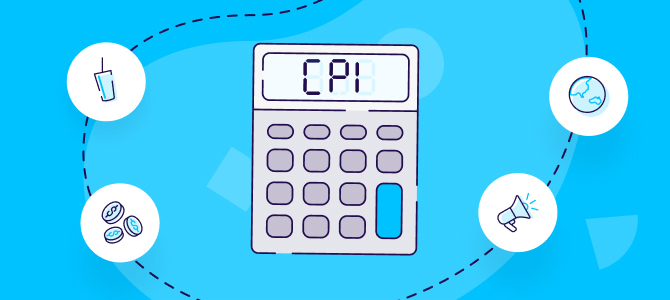
As mentioned above the CPI calculation is dependent on a number of factors. Let’s explore them further.
Country or region
The location of the user is an important factor in establishing the cost of a CPI. The price will often be influenced by the socio-economic standard of the population. In other words, the advertiser is expecting that more affluent countries will spend more in-app and will therefore be higher value users. As a result, more developed countries or regions often come with a higher price tag for CPI. For example, in North America the average CPI is $5.30 compared to LATAM which is $0.30.
Channel
Different channels will have different CPI costs depending on the services they offer and their popularity. Channels such as Facebook and Twitter that offer a larger audience may be able to command higher prices. However, it’s a delicate balancing act because the broader the audience the lower the CPI. Niche channels that have a very targeted audience may also be able to demand a higher CPI even without the scale of some of the larger channels.
App vertical/genre
CPI can vary greatly across verticals and between genres within the same vertical. For example within gaming, the CPI for hyper casual games is usually $1 or less, whereas for midcore and hardcore games the CPI can be up to fives times that.
Cost of ad unit
The cost of your CPI will also be linked to the cost of your ad unit. The publisher will have different values attached to different parts of their inventory. Inventory that is more prominent, or above the fold will command a higher price compared to inventory that is remnant, i.e. inventory that the advertiser has not been able to sell.
Android vs. Apple
The difference between Apple and Android is another important factor that can influence CPI. For similar reasons to geolocation, iOS users are known to spend more than the average android users. That is because iOS is more dominant in regions that have a higher GDP such as North America, Japan, and Europe, whereas Android has more of a presence in regions like LATAM, India and Southeast Asia.
The difference is stark. The average CPI for Android is $1.20, whereas iOS is triple that at $3.60. Within the different gaming genres there is also a gap. For example puzzle games in Japan have a CPI of $1.77 on android compared to $3.69 on iOS. Action games range from $2.01 on Android to $3.96 on iOS, and educational games are $1.09 on Android and $3.04 on iOS.
CPI vs…
CPI is, as discussed, an important pricing model for app marketers. However there are a number of alternative models and metrics that have their advantages and disadvantages when compared to CPI. Let’s examine further.
CPI vs. CPM
Cost per mille is the price an advertiser pays for every 1000 (mille) times an ad is displayed. The price for CPM is much lower than CPI, and if your goal is brand awareness, then CPM can be a great tool for spreading the word. However, app owners have no guarantee that just because a user saw their ad that any action will be taken. Therefore, if you are looking for specific actions or looking to grow your user base, CPI is often preferred to CPM (as mentioned above SRNs charge based on CPM while optimizing towards eCPI).
CPI vs. CPA
With Cost per action the advertiser pays the publisher when a predefined action is carried out by the user. This could be installing the app, passing a certain level or completing a purchase. CPA is sometimes preferred to CPI as it can include actions that occur after install. With CPI there is no guarantee that a user will engage with your app post install, but with CPA you don’t have to pay the publisher until the user has performed some lower down the funnel actions, indicating engagement and value.
CPI vs. LTV
Lifetime value refers to how much a user is worth to the app owner, from install to churn. CPI is not an alternative to LTV, but rather two metrics that should be used together to complement one another. For example, you can’t calculate LTV without expense metrics like CPI. Additionally, CPI alone is not enough to understand the true value of a user as it gives no indication of actions further down the funnel. However, together they help to build a complete picture.
Key takeaways
– CPI is a predetermined price that the advertiser agrees to pay the publisher for delivering an attributed install
– eCPI or effective CPI is the de-facto price you are paying for installs and is often used as an optimization target
– The cost of an install is driven by many factors including geo, operating system, vertical, ad unit, channel, and of course supply and demand

